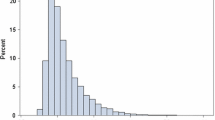Abstract
Simultaneous optimal estimation in linear mixed models is considered. A necessary and sufficient condition is presented for the least squares estimator of the fixed effects and the analysis of variance estimator of the variance components to be of uniformly minimum variance simultaneously in a general variance components model. That is, the matrix obtained by orthogonally projecting the covariance matrix onto the orthogonal complement space of the column space of the design matrix is symmetric, each eigenvalue of the matrix is a linear combinations of the variance components and the number of all distinct eigenvalues of the matrix is equal to the the number of the variance components. Under this condition, uniformly optimal unbiased tests and uniformly most accurate unbiased confidence intervals are constructed for the parameters of interest. A necessary and sufficient condition is also given for the equivalence of several common estimators of variance components. Two examples of their application are given.
Similar content being viewed by others
References
Afriat SN (1957) Orthogonal and oblique projectors and the characteristics of pairs of vector spaces. Proc Camb Philos Soc 53: 800–816
Arnold SF (1981) The theory of linear models and multivariate analysis. Wiley, New York
Baksalary JK (1987) Algebraic characterizations and statistical implications of the commutativity of orthogonal projectors. In: Pukkila T, Puntanen S (eds) Proceedings of second international tampere conference in statistics. pp 113–142
Baltagi BH (1995) Econometric analysis of panel data. Wiley, New York
Brown KG (1984) On analysis of variance in the mixed model. Ann Stat 12: 1488–1499
Diggle PJ, Heagerty P, Liang KE, Zeger SL (2002) Analysis of longitudinal data. Oxford Science, New York
Graybill FA, Hultquist RA (1961) Theorems concerning Eisenhart’s model II. Ann Math Stat 32: 261–269
Jiang J (2004) Dispersion matrix in balanced mixed ANOVA models. Linear Algebra Appl 382: 211–219
Khuri AI., Methew T, Sinha BK (1998) Statistical test for Mixed Linear Models. Wiley, New York
Laird NM, Ware JH (1982) Random effects models for longitudinal data. Biometrics 38: 963–974
Lehmann EL (1986) Testing statistical hypotheses, 2nd edn. Wiley, New York
Lencina VB, Singer JM (2006) Measure for measure: exact F tests and the mixed models controversy. Int Stat Rev 74: 391–402
Rao CR (1967) Least squares theory using an estimated dispersion matrix and its application to measurement of signals. In: LeCam LM, Neyman J (eds) Proceedings of fifth Berkeley symposium on math statist. & Pro. vol 1. University of California Press, Berkeley, pp 355–372
Rao CR, Kleffe J (1988) Estimation of variance components and applications. Elsevier Science Publishers, New York
Searle SR, Casella G, McCulloch CE (1992) Variance components. Wiley, New York
Seely J (1971) Quadratic subspaces and completeness. Ann Math Stat 42: 710–721
Szatrowski TH (1980) Necessary and sufficient conditions for explicit solutions in the multivariate normal estimation problem for patterned means and covariances. Ann Stat 8: 802–810
Tjur T (1984) Analysis of variance models in orthogonal designs. Int Stat Rev 52: 33–81
Wang CM, Lam CT (1997) A mixed-effects models for the analysis of circular measurements. Technometrics 39: 119–126
Wu MX, Wang SG (2004) Simultaneously optimal estimation for fixed effects and variance components in the mixed model. Sci China Ser A 47: 787–799
Wang SG, Yin SJ (2002) A new estimate of the parameters in linear mixed models. Sci China Ser A 45: 1301–1311
Xu LW, Wang SG (2009) The BLUE and Spectral Decomposition Estimator in General Linear Mixed Models. Acta Mathematica Scientia (in Chinese) 29: 223–232
Author information
Authors and Affiliations
Corresponding author
Rights and permissions
About this article
Cite this article
Wu, MX., Yu, KF., Liu, A. et al. Simultaneous optimal estimation in linear mixed models. Metrika 75, 471–489 (2012). https://doi.org/10.1007/s00184-010-0337-1
Received:
Published:
Issue Date:
DOI: https://doi.org/10.1007/s00184-010-0337-1




